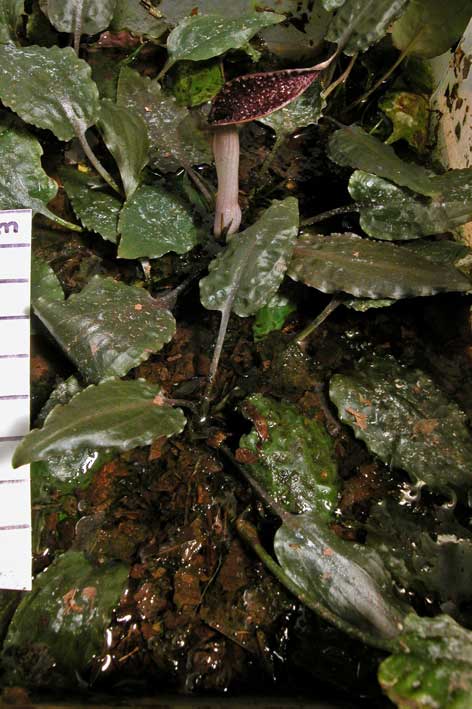 |
Cultivated in shallow water on leaf litter of the beech tree (Fagus sylvatica).
coll. JP0502, cult. B1124 |
|
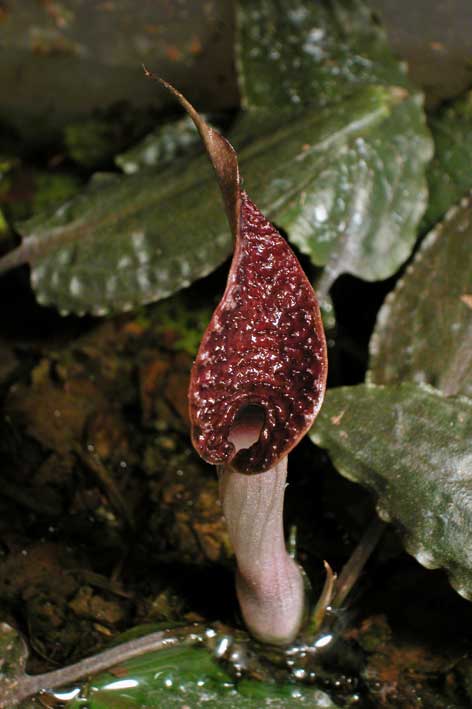 |
Leaves smooth to slight bullate, margin smooth to unregular undulate.
coll. JP0502, cult. B1124
|
|
 |
The limb has a rough surface but has not the prominent outgrowths as seen in C. nurii var. nurii.
coll. JP0502, cult. B1124 |
|
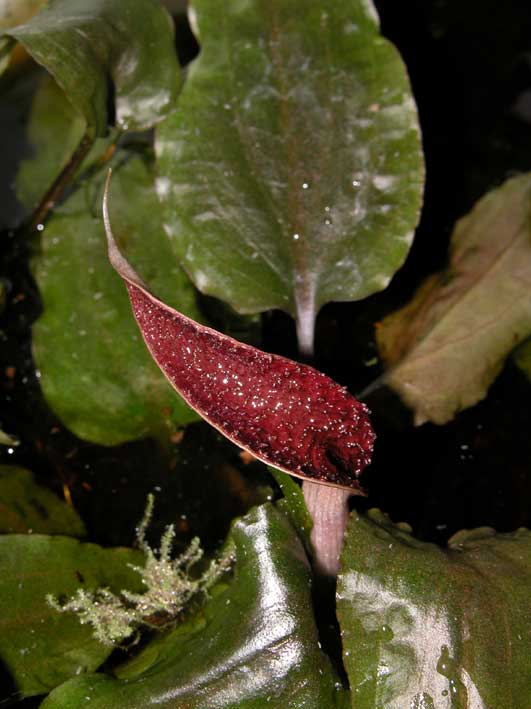 |
Note the left or right twist of the limb. A general feature in Cryptocoryne (on a 50 50 base)
coll. JP0502, cult. NJ
photo Jacobsen
|
|
| |
|
|
|
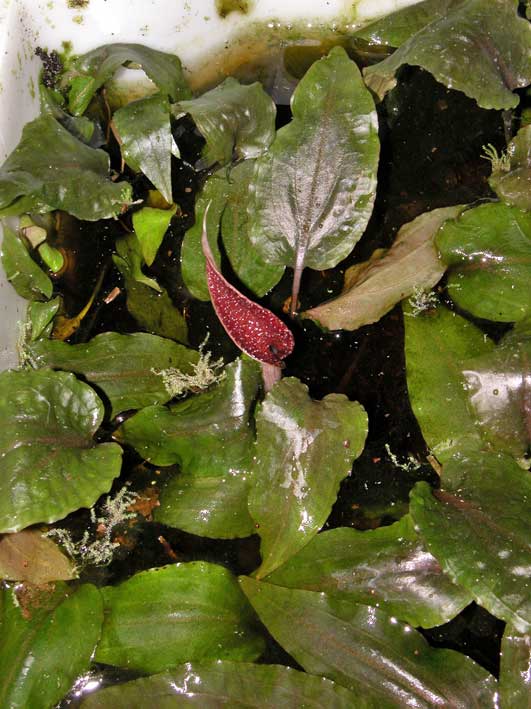 |
The colour of the leaves may vary from green to brownish-green.
coll. JP0502, cult. NJ
photo Jacobsen
|
|
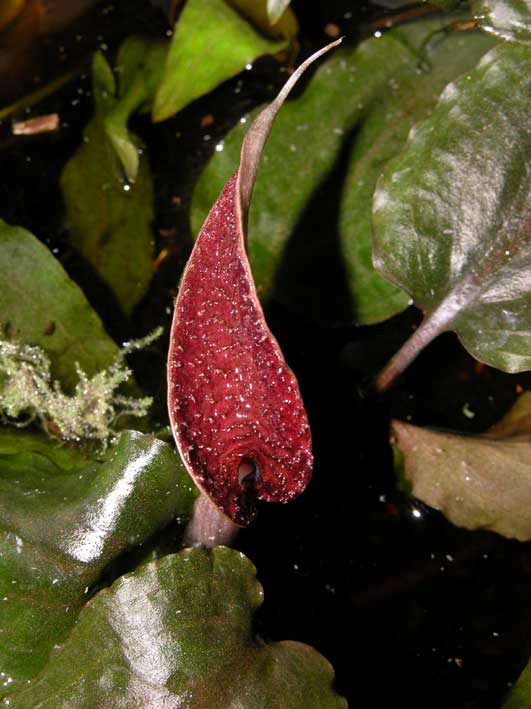 |
Lower side of the leaves pale green.
coll. JP0502, cult. NJ
photo Jacobsen
|
|
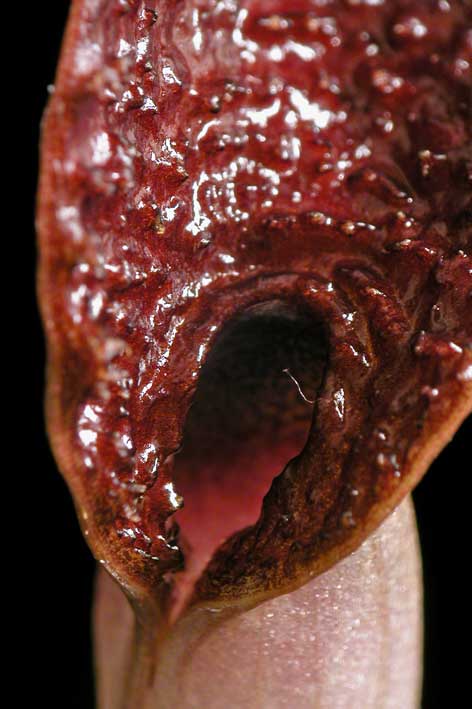 |
More or less regular bulged.
coll. JP0502, cult. B1124
|
|
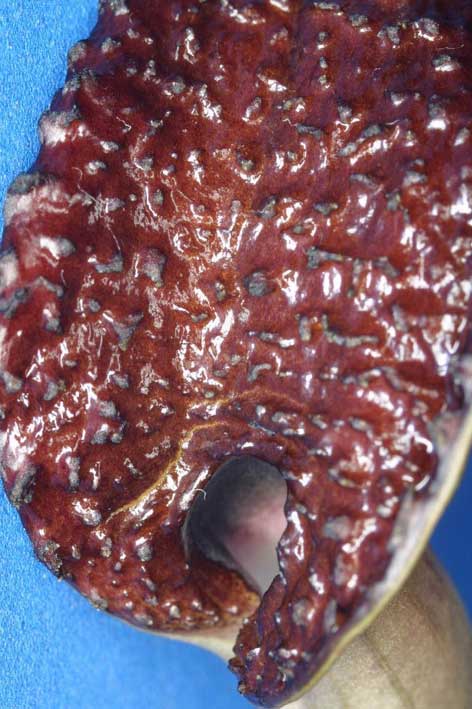 |
With striking depressions on the limb - not usual.
coll. JP0502, cult. SW
photo Wongso
|
|
| |
|
|
|
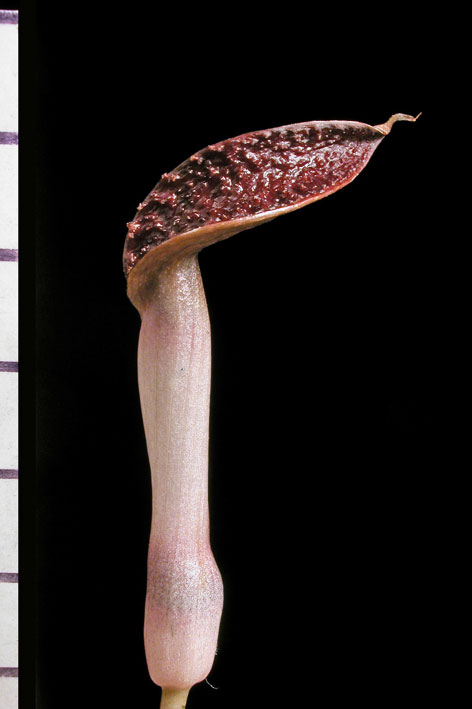 |
The sidewards opening of the tube is typical nurii like.
coll. JP0502, cult. B1124
|
|
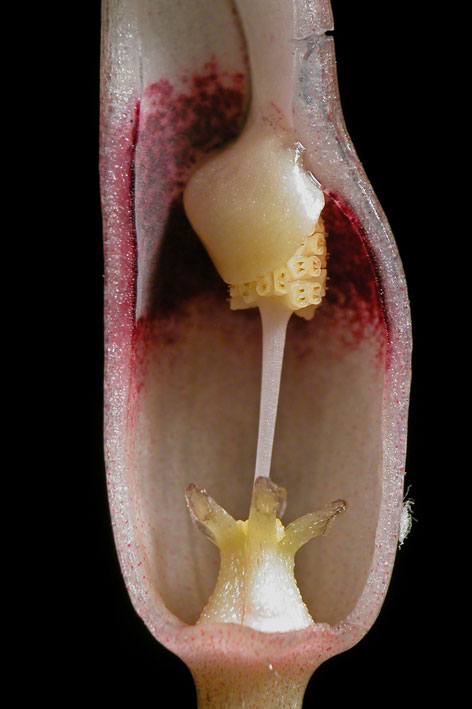 |
Opened kettle. The entrance is deep red, shiny by reflection.
coll. JP0502, cult. B1124
|
|
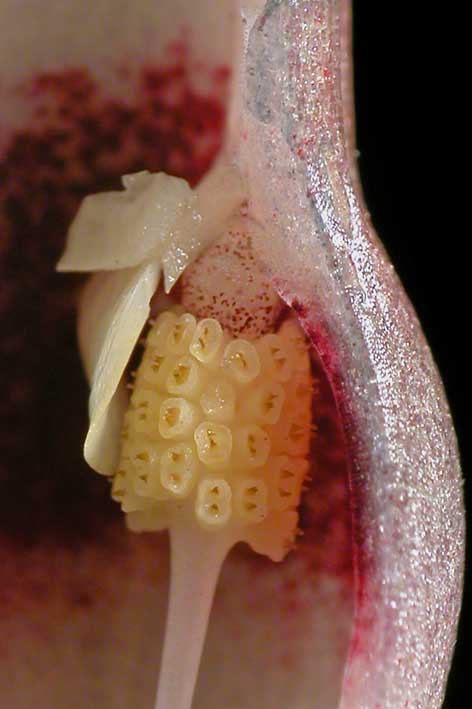 |
The flap (valve) damaged by the cutting.
coll. JP0502, cult. B1124
|
|
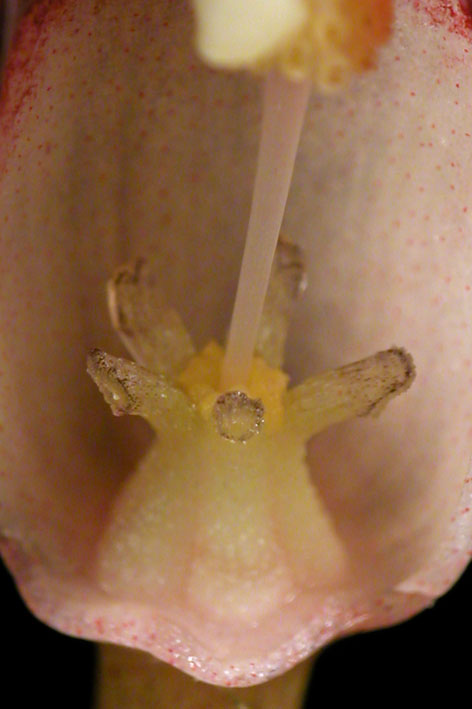 |
Small, yellow olfactory bodies.
coll. JP0502, cult. B1124
|
|
| |
|
|
|
There are reports from Japan that the colour of the limb also can be bright yellow with small red dots. This is a well known phenomen when red dots 'grow' and the yellow base may even disappear. It is also known for example in C. minima.
February 2016 |
Literature.
see the nurii-group
back to the nurii-group
|
|